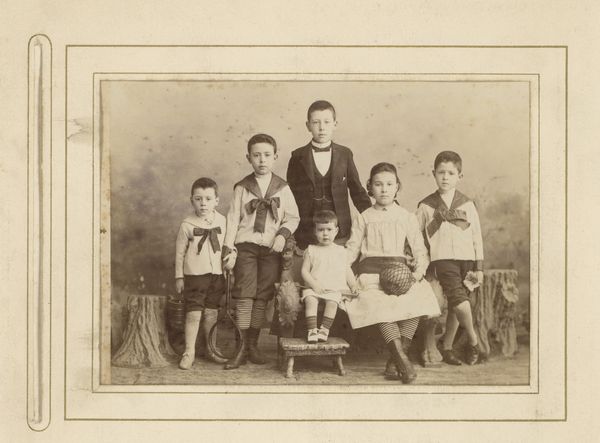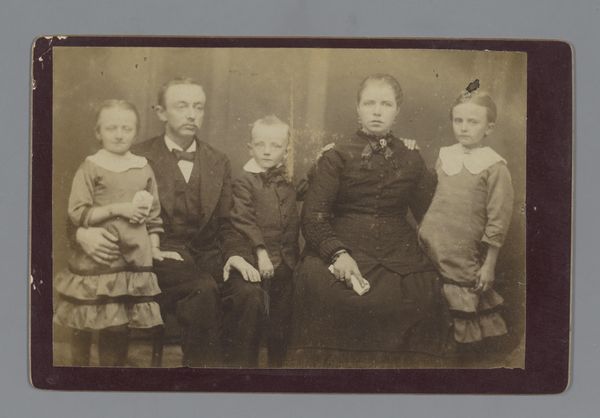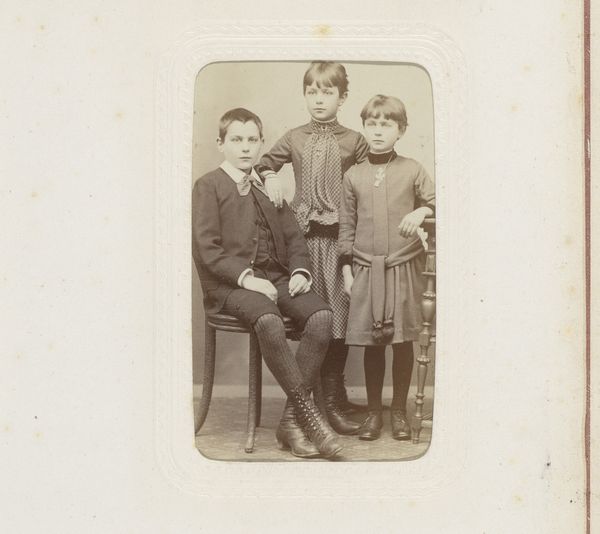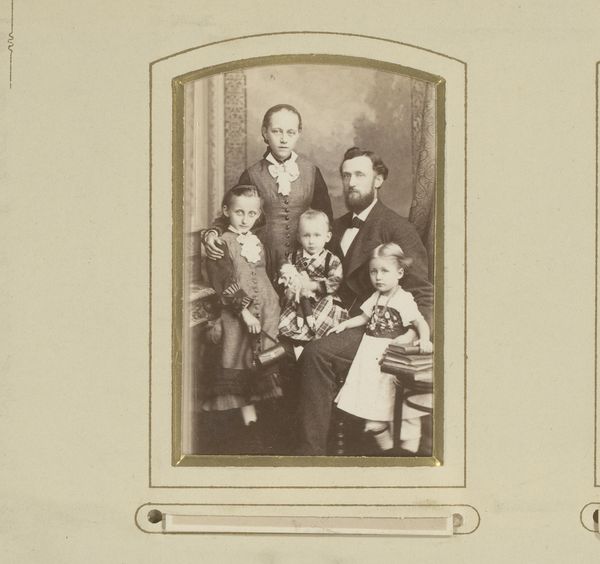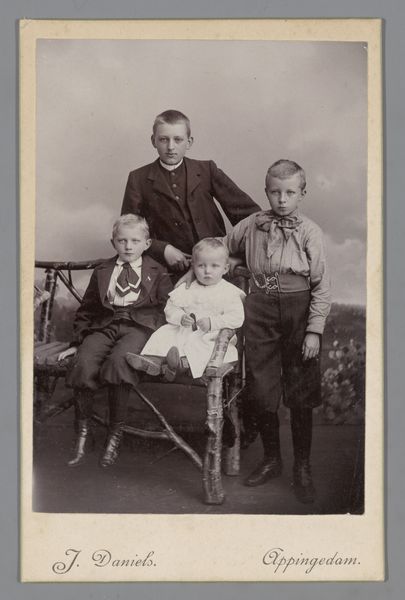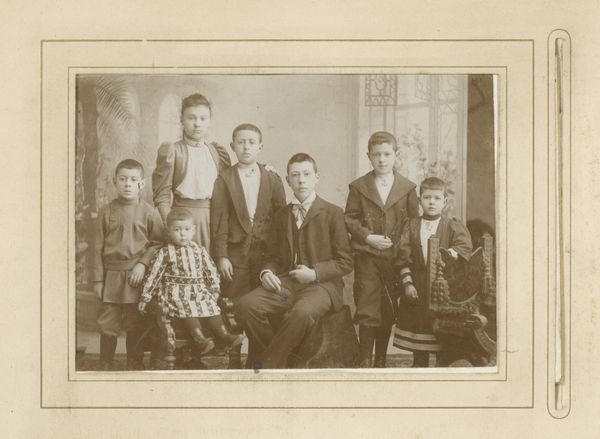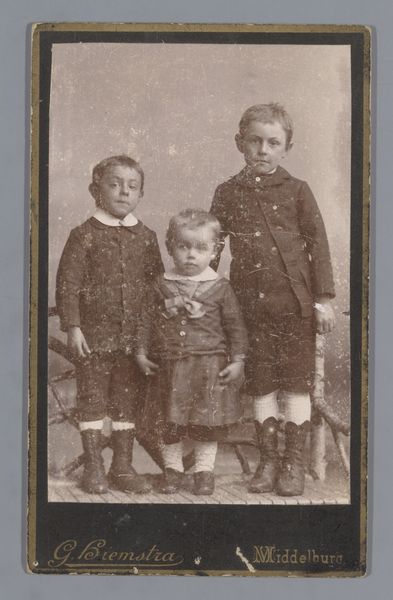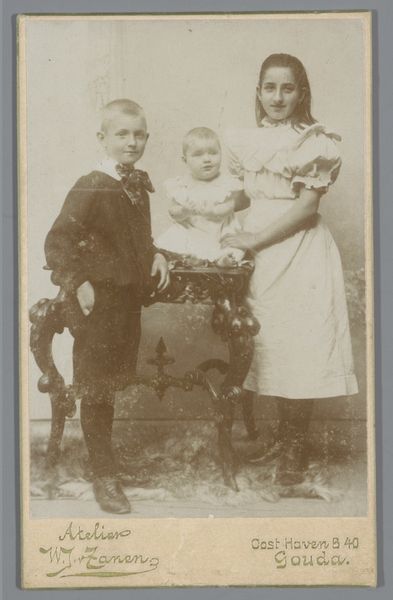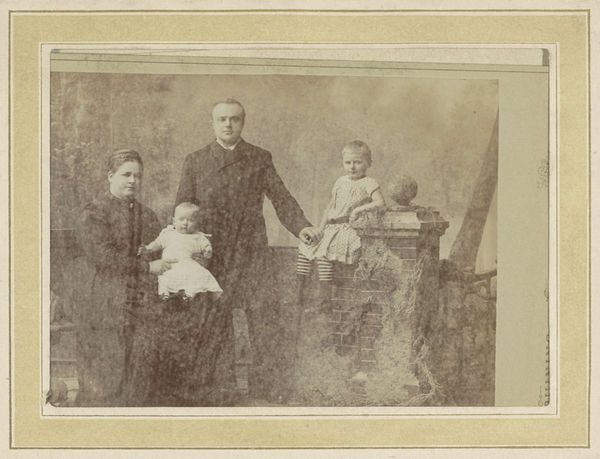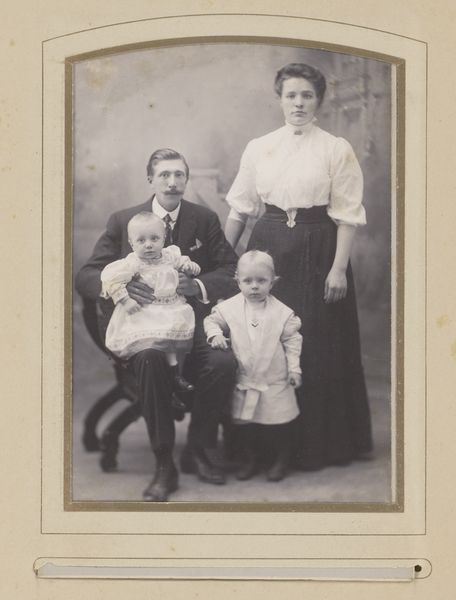
photography
#
portrait
#
photography
#
group-portraits
#
19th century
#
genre-painting
Dimensions: height 135 mm, width 98 mm
Copyright: Rijks Museum: Open Domain
Curator: Looking at this piece, the immediate thing I notice is how subdued and carefully constructed the entire tableau seems. There is a somber air about it all. Editor: Indeed. What we have here is a group portrait of a family with two children, taken circa 1897. The image, created through photography, comes to us from H. Sanders & Co. Curator: I’m struck by the rigidity of the sitters. Their formal poses and the composition with plants arranged across the bottom create a very deliberate sense of status and formality. Even the plants serve to indicate cultivation, control… social standing, perhaps. Editor: You’re keying into something essential about the 19th century. This era witnessed the rise of studio photography, a shift in accessibility driven by technological advancement and changing class structures. The portrait became less about the individual and more about communicating the idea of family. Curator: So, this wasn't simply a family photo; it was a deliberate display of societal participation. Editor: Precisely. Consider the material constraints. Long exposure times meant sitters had to remain still, hence the stiff postures. It wasn't necessarily a natural representation, but a performative one, crafted and negotiated. We should note also that the photograph’s inherent reproducibility aided greatly in the distribution of such ideals, cementing societal norms via repeated exposure. Curator: The props too – the patterned fan, the potted plants – speak to bourgeois aspiration and interior decoration, a crafted image for the social record. The dark garments of all the members certainly underline the gravitas in taking a portrait. Editor: The circulation and reception of such imagery within a broader cultural context reinforces prevailing values and power structures. To understand its complete value, one has to place it alongside popular illustrations and mass-produced print, and analyse the intersection. Curator: The family group photo itself almost becomes a commodity in this setting, reproduced, exchanged, and consumed as a marker of social belonging. It is an artifact created by laborers and companies for mass dissemination. Editor: Examining this artwork, we appreciate it as an interesting example of production shaped by historical forces. Curator: It gives us an interesting insight on the deliberate creation and social performance in 19th century studio photography.
Comments
No comments
Be the first to comment and join the conversation on the ultimate creative platform.
